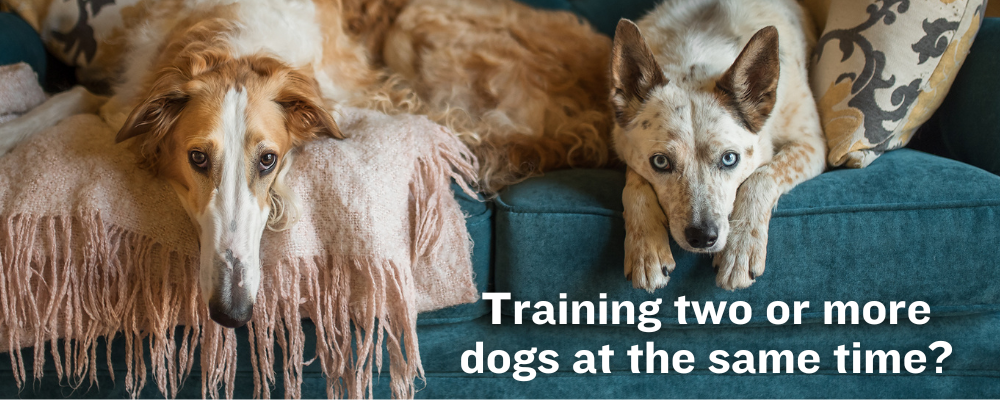German Shepherd dogs are intelligent and have a strong sense of self. They are independent thinkers and may not respond well to harsh or heavy-handed training methods. German Shepherds also have an independent streak, making them more stubborn than other breeds.
German Shepherds can be stubborn for choosing not to follow a command or doing things they know they are not supposed to. Oftentimes, it might just be the owner’s stubbornness for not giving clear commands or enough positive reinforcement.
Stubbornness in a dog can be frustrating for any owner. And sometimes it feels like nothing works, no matter how hard you tried. In this article, we will look at what a stubborn GSD and the owner may look like, and share some tips on how to train your dog to be less stubborn.
Also read: Why Are German Shepherds So Stubborn? And What to Do About It?
What does a stubborn dog look like?
A stubborn dog is a dog that has a mind of his own, and he refuses to listen or obey. They actively choose not to follow commands.
Stubborn dogs often have low concentration levels and become bored easily. They may also become aggressive, lash out at people or other dogs and chew on anything they can reach.
A stubborn dog is sometimes just not being motivated enough. They may find your reward, be it a treat, a hug or praise, not high-value enough to do the things they were asked to do.
In that case, could it be the owner more stubborn than the dog?
How to tell if you are more stubborn than your dog?
Humans usually refer to a dog as “stubborn” if he/she won’t do the exact thing he/she was asked to.
This is even so when their dog has successfully done the behavior in the past. And they may be wondering: Is my dog being stubborn?
More often than not, the difference is that the human isn’t providing clear commands or enough motivation.
This is where the “stubborn human” part comes into play.
Before blaming it on your dog, you need to make sure you are not exhibiting insecure behavior and unrealistic expectations – which is very likely to confuse your dog and will eventually make him not understanding what to do.
The disobedient type of stubbornness
Stubbornness can mean ignoring commands on purpose on one hand, but it can also manifest itself to keep doing things even knowing they are not supposed to.
Below are some common examples of disobedient stubborn behavior:
- If your dog chews up your slippers, your shoes, or your remote control…perhaps he feels neglected and wants to get your attention.
- If your dog pees inside the house…it’s possible that he thinks he can leave his mark everywhere he goes.
- If your dog keeps running up to people or other dogs and barking…perhaps he thinks he is taking control.
- If your dog keeps digging in your backyard…maybe he is looking for a job to do for channeling that excessive energy.
- If your dog wakes up at night and barks…perhaps he senses something around the house and is trying to tell you.
If you are struggling with the thought that nothing seems to work – even to the point of giving up. Chances are you might not be doing it right. Watch this video to see how a “stubborn” German Shepherd is being transformed into a new dog:
Understanding your dog
Before you try to do anything to your do to make him/her less stubborn, it’s very important to understand what makes your dog behave the way he/she does – like a dog.
Learning about the type of dog that you have, their history, and what they’re used for. And then changing your perception and your expectations for your dog’s behavior…you’ll realize a lot of what they’re doing might be making you mental or making you think that there is something seriously wrong with your dog, might just be completely typical for that breed.
Kim Brophey – Applied Ethologist, award-winning certified professional dog trainer.
You may also like: The Essential Mindset: Best GSD Training Advice From A Professional Canine Behavior Consultant
Start with small, attainable goals
Before you think your German Shepherd is stubborn, set very small goals for your dog to do and build it from there.
With several 10-to-15-minute practice sessions each day, most pets can master these core skills in just a week or two.
Here’s a video of Brandon McMillian demonstrating how to train your dog to SIT, DOWN, and NO in action:
Give clear commands
German Shepherds are known for their intelligence and the ability to learn fast. They can literally be trained to do anything.
But the key to success is to be super clear and specific on what you want them to do – without making them feel threatened.
For instance, if you’re trying to train your dog to sit and he is not getting the idea, try bringing him to a quiet area where you two can have some one-on-one time together.
Give him a few treats and have him sit in front of you while you praise him and give him the treats. Once he seems to understand the association between the command and the action, give him a treat and have him sit again.
Repeat the process a few times, giving him praise each time he sits.
If he refuses to sit again, don’t force it. Simply end the session and try again another time.
Use positive reinforcement
Oftentimes, stubborn German Shepherds may just need to be reminded that they like the rewards they receive when they follow a command or perform a trick.
You can provide positive reinforcement in many ways, including treats, verbal praise, and petting.
You can also use toys if your dog enjoys playing with certain toys. You may want to keep a log of which times your dog does something right. Then, use that log as a reward system so that your dog will associate good behaviors with positive reinforcement.
Keep sessions short and sweet
If you have a particularly stubborn German Shepherd, don’t try to push him too hard all at once.
Rather, break your training into smaller segments that are less overwhelming for your dog. Try to keep each training session to about 15 minutes and try not to push your dog too much more than that.
If your dog is feeling overwhelmed, he may become even more stubborn and refuse to follow your commands. A dog who is stressed out may also be more prone to developing anxiety if you push him too hard and for too long at one time.
Don’t lose your temper
If your dog is being stubborn and you’re frustrated, take a deep breath and a break.
You do not want to overwhelm your dog or yourself by pushing too hard. You may even want to bring in someone else to help you train your dog. If your dog is familiar with another person and trusts them, they may be more willing to listen to that person.
If you find that nothing is working with your dog and they seem determined to stay stubborn, you may want to consult with a professional trainer. A trainer can help you understand why your dog is being stubborn and may have some helpful tips for you on how to deal with it.
Help your dog to build confidence again
All dogs like to do things that please their owners and if they aren’t sure how to make you happy, they will be more resistant to follow your commands.
There are a few things you can do to help build your dog’s confidence and make them more willing to listen to your commands again.
Begin with some basic obedience training.
Start with commands like “sit”, “stay”, and “come”. These are basic commands that all dogs should be able to perform. By practicing these commands, you can help your dog regain their confidence.
If you still struggling with any of these commands, it might be time to find a dog trainer. They will be able to help you and your dog through these challenges if you think you’ve tried everything you could but failed.
Conclusion
German Shepherds are a wonderful breed of dog. They are smart, strong, and are known to be excellent family dogs as well. However, they do have a tendency to be stubborn and that is something that you need to be aware of when training them.
You can help your German Shepherd regain their confidence and trust in you by following some of these tips. With tons of love, patience, and positive reinforcement, you should be able to tackle even the most stubborn German Shepherds.



